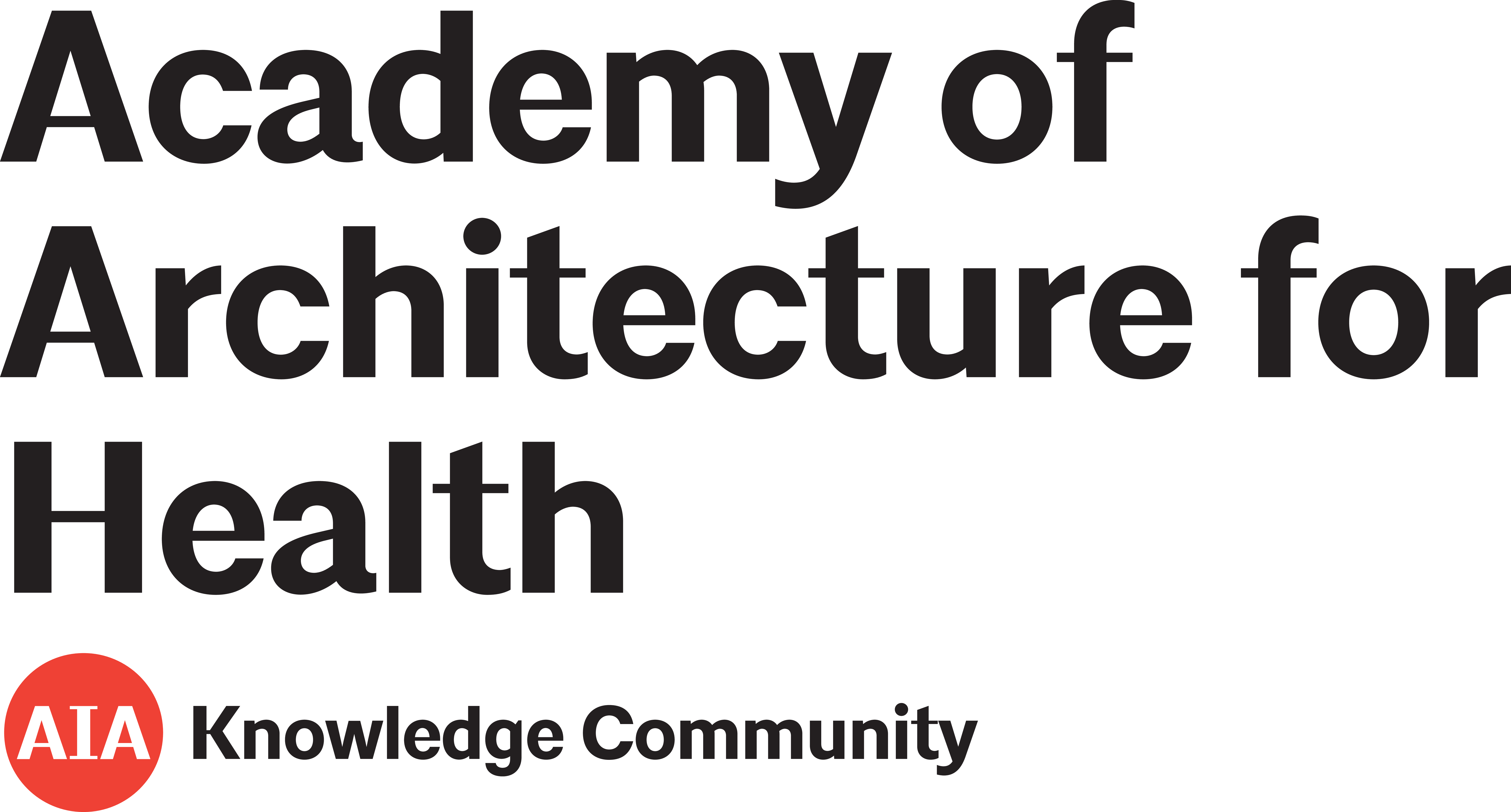Preventing SARS-CoV-2 transmission in the emergency department by implementing a separate pathway for patients with respiratory conditions
2021
Journal of Complementary and Integrative Medicine
Journal Article
Issue 2
Volume 19
Pages 383-388
Author(s): Alqahtani, F., Alanazi, M., Alassaf, W., Aleanizy, F. S., Aljahany, M., Joseph, M., AlRaye, M.
Since the beginning of the coronavirus disease 2019 (COVID-19) pandemic, healthcare facilities have provided services to patients with suspected or confirmed cases of this and other highly contagious respiratory illnesses. In some areas, emergency departments (EDs) have become important resources for patient populations without other ways to access medical care.
Added June 2021
Mental health outcome measures in environmental design research: A critical review
2021
HERD: Health Environments Research & Design Journal
Journal Article
Issue 3
Volume 14
Pages 331-357
Author(s): Shin, J., Dennis, S., Mohammed, H.
While recent studies show a relationship between well-being and the built environment, few focus specifically on mental health. This study found that access to nature and other design elements of the built environment can improve positive affect (pleasurable feelings), vitality (energy or aliveness), executive functioning (memory, concentration), mood, and general well-being—while also decreasing cortisol (stress).
Added May 2021
Fit for what purpose? Exploring bicultural frameworks for the architectural design of acute mental health facilities
2021
International Journal of Environmental Research and Public Health
Journal Article
Issue 5
Volume 18
Pages 2343
Author(s): Jenkin, G. L. S., McIntosh, J., Every-Palmer, S.
There is a great need for mental health services around the world. Recent approaches to mental and behavioral health focus on “personal recovery,” one of which is called CHIME.
Added March 2021
Population Health: The Health & Wellness of People and Communities
2014
AIA AAH Academy Journal
Journal Article
Author(s): Couvillion, Mason, Waters, Lindsey, Kraus, Shannon
Added July 2020
Alternative Care Sites: An Option in Disasters
2020
Western Journal of Emergency Medicine: Integrating Emergency Care with Population Health
Journal Article
Issue 3
Volume 21
Pages 484–489
Author(s): Iserson, K. V.
Added April 2020
Application of different circadian lighting metrics in a health residence
2020
Journal of Daylighting
Journal Article
Issue 1
Volume 7
Pages 13-24
Author(s): Busatto, N., Mora, T. D., Peron, F., Romagnoni, P.
Previous studies have established that indoor illuminance must reach certain levels for proper visual performance, and should also work to enhance spatial perception, security, and well-being. Insufficient indoor lighting can adversely influence patient health outcomes, particularly patient circadian rhythms. The circadian rhythms of elderly patient populations may be especially sensitive to illuminance levels.
Added March 2020
Service environment link and false discovery rate correction: Methodological considerations in population and health facility surveys
2019
PLOS ONE
Journal Article
Issue 7
Volume 14
Pages e0219860
Author(s): Tegegne, T. K., Chojenta, C., Getachew, T., Smith, R., Loxton, D.
Added August 2019
Healthcare signage design: A review on recommendations for effective signing systems
2019
HERD: Health Environments Research & Design Journal
Journal Article
Issue 3
Volume 12
Pages 45-65
Author(s): Rodrigues, R., Coelho, R., Tavares, J. M. R. S.
Studies have shown that designing “patient-centric” healthcare environments can alleviate stress for both patient populations as well as healthcare staff members. Patient-centric designs carefully consider how patients will interact with the built environment, and how the built environment itself can work to make their healing process easier.
Added December 2018
How architectural design affords experiences of freedom in residential care for older people
2017
Journal of Aging Studies
Journal Article
Author(s): Van Steenwinkel, I., Dierckx de Casterlé, B., Heylighen, A.
As the global population of elderly humans increases, healthcare providers working in long-term care facilities have focused more on how certain social and physical design elements can help promote higher quality care.
Added October 2018
The impact of an acute psychiatry environment on older patients and their families
2014
Journal of Gerontological Nursing
Journal Article
Issue 9
Volume 40
Pages 50-56
Author(s): Hung, L., Loewen, E., Bindley, B., McLaren, D., Feist, T., Phinney, A.
There is a lack of research that examines impact of the designed environment on the experience of older adults and their families in healthcare settings.
Added October 2018
The influence of spatial design on team communication in hospital emergency departments
2018
HERD: Health Environments Research & Design Journal
Journal Article
Issue 2
Volume 12
Pages 100-115
Author(s): Naccarella, L., Raggatt, M., Redley, B.
Hospital emergency departments (EDs) are often high-intensity, busy, and complex environments treating especially sensitive patient populations in a time-sensitive manner. The nature of ED environments places added emphasis on the importance of clear communication between staff members and how the overall design of an ED might impact these interactions.
Added September 2018
How enclosure and spatial organization affect residents’ use and experience of a dementia special care unit: A case study
2019
HERD: Health Environments Research & Design Journal
Journal Article
Issue 1
Volume 12
Pages 145-159
Author(s): Van Hecke, L., Van Steenwinkel, I., Heylighen, A.
One approach to housing people with dementia involves the creation of small-scale, homelike environments. Since this approach is not always affordable, healthcare designers are working to design dementia special care units (SCUs) that provide the benefits of small-scale facilities while still being housed inside of large-scale residential care facilities.
Added September 2018
What makes a garden in the elderly care facility well used?
2019
Landscape Research
Journal Article
Issue 2
Volume 44
Pages 256-269
Author(s): Shi, S. L., Tong, C. M., Marcus, C. C.
The World Health Organization estimates that by 2050, 22% of the world’s population will be over the age of 60. As the population of this age group continually increases, healthcare providers are constantly striving to improve the quality of long-term care facilities so that they can provide better experiences for elderly patients.
Added September 2018
Optimal spaces for those living with dementia: Principles and evidence
2019
Building Research & Information
Journal Article
Issue 6
Volume 47
Pages 734-746
Author(s): Barrett, P., Sharma, M., Zeisel, J.
The World Health Organization (WHO) identifies dementia as a major cause of dependency among elderly populations around the world, with roughly 50 million people affected at the time of this writing.
Added August 2018
Legibility of floor plans and wayfinding satisfaction of residents in Care and Attention homes in Hong Kong
2018
Australasian Journal on Ageing
Journal Article
Issue 4
Volume 37
Pages E139-E143
Author(s): Tao, Y., Gou, Z., Lau, S. S.-Y., Lu, Y., Fu, J.
This study takes place in Hong Kong, where “Care and Attention” homes are defined as healthcare facilities treating patients with moderate mental and physical impairments. Hong Kong’s high population density directly affects healthcare infrastructure; accordingly, this study focuses on a high-density, high-population Care and Attention home.
Added August 2018
Objective and subjective evaluation of psychiatric ward redesign
1984
The American Journal of Psychiatry
Journal Article
Issue 5
Volume 141
Pages 639-644
Author(s): Whitehead, C. C., Polsky, R. H., Crookshank, C., Fik, E.
At the time of this study, relatively little research had been done to explore the potential benefits of incorporating architectural designs geared specifically towards improved patient well-being in psychiatric treatment environments. A “psychoenvironmental” model incorporating therapeutic architectural designs into psychiatric healthcare environments was developed before the publication of this study; however, this particular model had not yet been examined empirically.
Added August 2018
Healing environments: What design factors really matter according to patients? An exploratory analysis
2016
HERD: Health Environments Research & Design Journal
Journal Article
Issue 1
Volume 10
Pages 87-105
Author(s): Schreuder, E., Lebesque, L., Bottenheft, C.
Six themes that may contribute to healing environments: spatial comfort, safety and security, autonomy, sensory comfort, privacy, and social comfort were identified from the literature. This Netherlands-based study evaluated how the six themes and associated design characteristics could be prioritized to maximize well-being. Each theme was described.
Added August 2018
Does the redesign of a psychiatric inpatient unit change the treatment process and outcomes?
2013
Psychiatric Services
Journal Article
Issue 8
Volume 64
Pages 804-807
Author(s): Urbanoski, K. A., Mulsant, B. H., Novotna, G., Ehtesham, S., Rush, B. R.
The overall “atmosphere” of a psychiatric treatment facility could be defined through the availability of patient autonomy and support from peers, the presence of aggressive behavior within the ward, and the general sense of ward organization and rule enforcement.
Added August 2018
The Role of Hospital Design in Reducing Anxiety for Pediatric Patients
2018
HERD: Health Environments Research & Design Journal
Journal Article
Issue 3
Volume 11
Pages 66-79
Author(s): Cartland, J., Ruch-Ross, H. S., Carr, L., Hall, A., Olsen, R., Rosendale, E., Ruohonen, S.
Since the 1960s, researchers have been studying the psychological trauma experienced by children receiving treatment in hospitals. Previous studies have observed instances of post-traumatic stress disorder, increased aggression, separation anxiety, and disrupted patterns of sleep in children discharged from hospitals.
Added July 2018
The impact of windows on the outcomes of medical intensive care unit patients
2018
International Journal of Gerontology
Journal Article
Issue 1
Volume 12
Pages 67-70
Author(s): Chiu, W.-C., Chang, P.-S., Hsieh, C.-F., Chao, C.-M., Lai, C.-C.
Numerous studies have demonstrated the positive impact that natural lighting can have on patient experiences, both in terms of overall mood and even overall recovery time. Exposure to regular rhythms of natural lighting can positively influence human sleeping patterns, which can play a large role in supporting positive moods and timely recoveries.
Added July 2018




